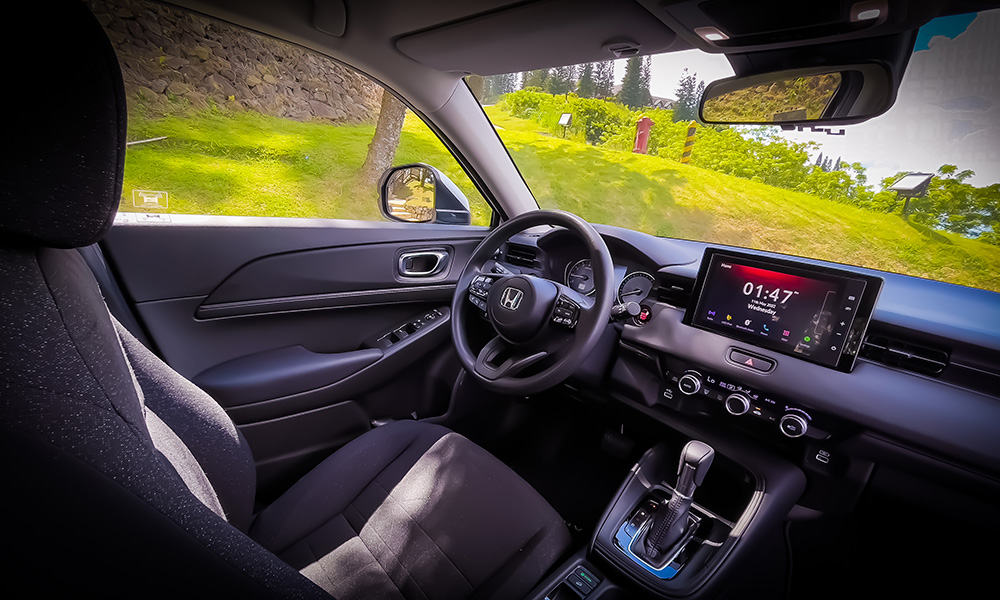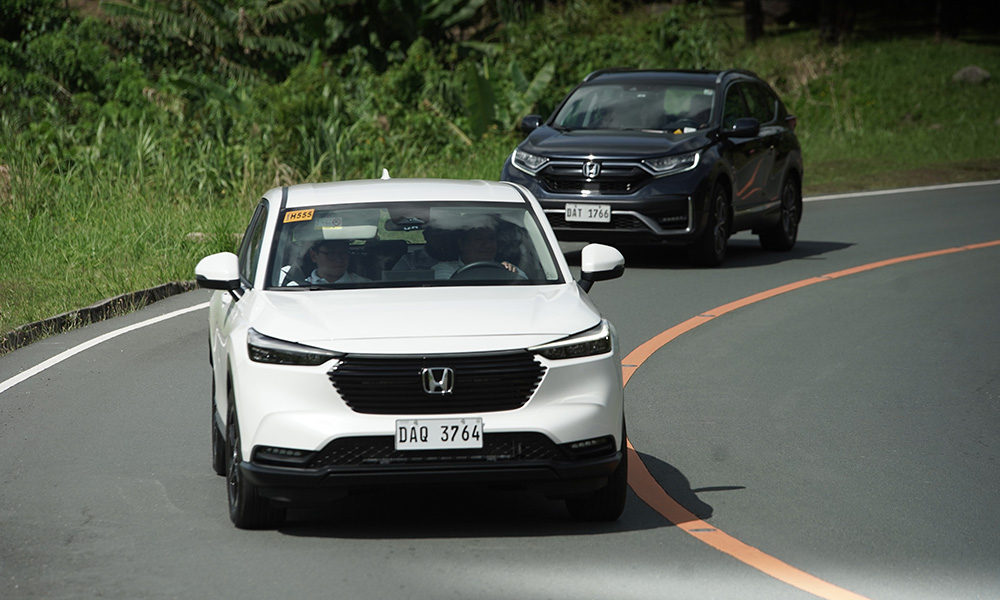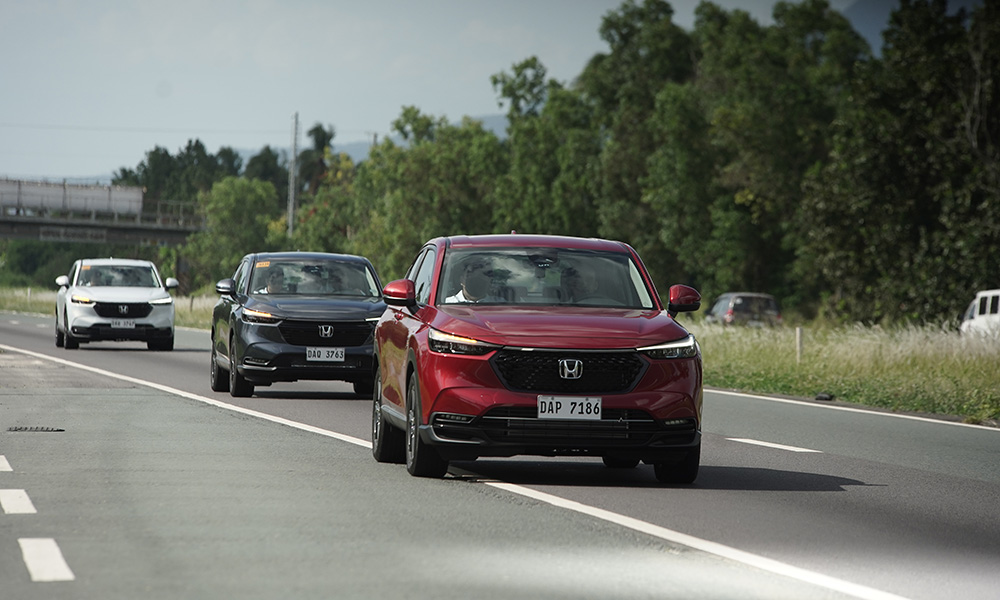
The Honda HR-V was always an intriguing vehicle. It was a small, quirky-looking crossover that was perfect for our tight roads. It didn’t last long, though, and the Japanese automaker killed the mini SUV.
But in the renaissance of crossovers, Honda brought the HR-V back from the dead for its second generation. It was based on the funky Jazz subcompact, and it sold quite well.
Just recently, Honda Cars Philippines has launched the all-new third iteration of the HR-V. We had the chance to try the small SUV extensively during a recent media drive that took us to places like Tagaytay and Anilao. Is it any good?




When photos of the new model came out, it was met with a good mix of reactions, with some finding the new exterior styling a bit eccentric. But to us, it looks like Honda has pulled out all of the concepts from its bag of design cues.
The Philippine-market lower-end variant has a simple grille with black horizontal slats in it, unlike those body-colored ones in other markets. This is flanked by a pair of small but sharp-looking LED headlamp clusters. The front bumper has simple curves and creases for that clean look.
While the front appears edgy, the sides evoke a minimalist look, with a character line that runs from the hood to the taillamp cluster. It gives off a sleek fastback look, but rides quite high and has black plastic cladding all around. Sitting under those is the same 17-inch wheel design shared across the two model grades. It’s a two-tone finish for the S, while the V’s wheels are painted dark gray.
At the back, a taillamp cluster stretches from one end to the other, connected by a lightbar broken by the Honda emblem in the middle. The only way you’d tell the variants apart from the back is with the number of tailpipes seen under the bumper.
Onlookers will definitely take a second look once they see the car on the road. To be honest, photos don’t do justice to how good the car looks in the metal.




Inside, the new HR-V is a nice place to be in. Though there’s liberal use of hard plastics, you’ll find soft-touch materials here and there, which feel good to the touch. Sitting front and center is an eight-inch infotainment system that is both Android Auto- and Apple CarPlay-capable.
HVAC controls are laid out similarly to the Civic. The knobs have a good tactile feel, clicking every time you tinker with them. There’s generous leg, elbow, and shoulder room. Although really tall people might have to deal with their hair brushing against the headliner.
The seats are upholstered in fabric (for the S) or leather (for the V), and they offer great support. The trunk is deceivingly roomy, despite looking quite small.


There are two 1.5-liter engines available for the HR-V. The S has a normally aspirated four-banger good for 119hp and 145 Nm. Meanwhile, the V gets a turbocharger that bumps up the horsepower figure to 174hp and almost doubles the torque to 240Nm. Both are paired with a CVT.
The entry-level variant is plenty good for urban situations, while the top variant shines during uphill climbs and highway driving. During the drive event, fuel consumption varied from 10km/L in the city and 18km/L on the highway. It’d be interesting to know how good they can be once the fresh engines have been properly broken in.



Ride quality has improved by a mile. Specifically, the suspension is more compliant and able to absorb most road imperfections. But it still handles pretty well, making you grin when tossed around corners. NVH levels are relatively good, and the CVT ensures smooth drives all the time.
But the biggest enhancement on the new HR-V is the addition of the latest Honda Sensing suite of driver aids. This is on top of the usual active and passive safety systems. And it’s available with both model grades. Best of all, prices are at P1,250,000 for the S, and P1,598,000 for the V.
The new HR-V has good looks, great handling, lots of oomph, and competitive pricing. We feel it will be one of the top choices among buyers of subcompact crossovers. Looks like Honda has a winner here.











Comments